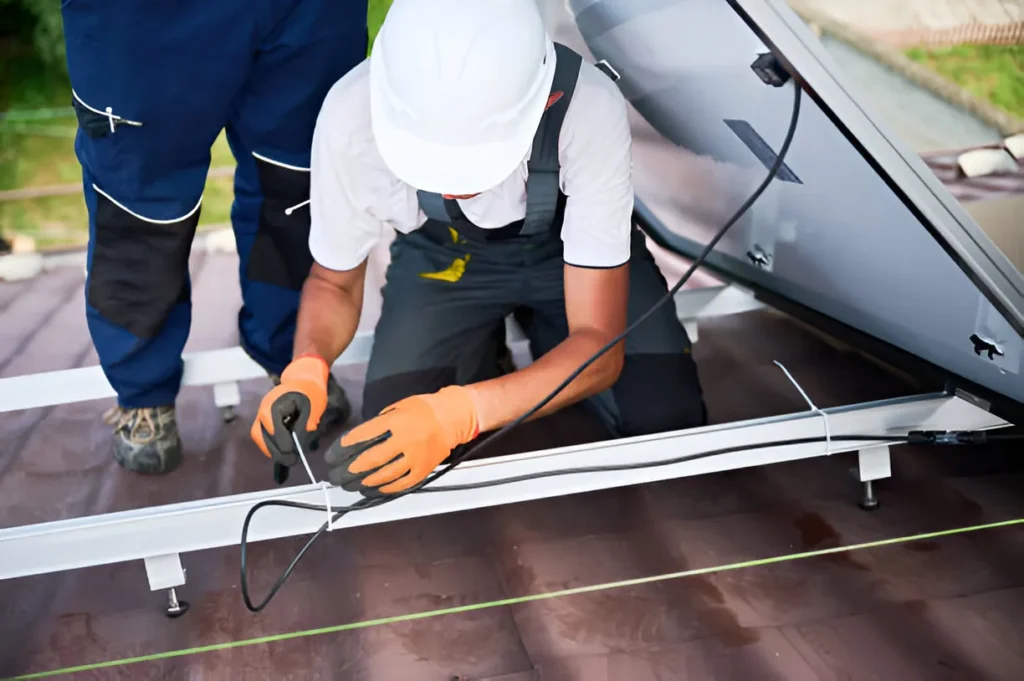The root cause of nylon tie breakage
Nylon tie breakage is a frequent problem in industries ranging from automotive to electronics. Although nylon ties are small, their failure can cause equipment malfunctions and safety risks.
Understanding the causes of nylon tie breakage—from materials and manufacturing to storage and application—is key to preventing costly issues.
Table of Contents
Influence of the material itself
Raw material quality
Nylon ties are mainly made of PA66 (nylon 66). High-quality PA66 has good toughness and strength, but if manufacturers to reduce costs, mixed with recycled materials or poor quality raw materials, the molecular structure of the tie will become uneven, strength and durability greatly reduced.
Material moisture content is also extremely critical. Nylon itself is hygroscopic, appropriate water content can enhance the toughness, too dry is easy to brittle, too wet is reduced strength.
Additives and Modifications
Additives are often added to ties to improve weathering, flame retardancy or flexibility. If the additives are unevenly distributed or imbalanced ratio, it is also easy to cause local strength weakness, becoming a potential risk of fracture.
Influence of Production Process
Injection Molding Process
Nylon cable ties are mostly produced by injection molding process. Temperature, pressure, cooling speed and other parameters directly affect the molecular arrangement and crystallinity of the tie. If the injection temperature is too high, the material will be degraded, too low is not enough molding, will lead to the lack of strength of the finished product.
Mold design is not reasonable (such as teeth, locks too thin or sharp corners) will lead to stress concentration, become a fracture of the “weak link”.
Post-processing
Ties are usually boiled or humidified after molding to restore the proper moisture content. If this step is omitted, the tape will become brittle due to over-drying.

Structural and Design Issues
- The structure of the teeth, locking clips, and body of the tie must be scientifically designed. Too thin a body, too dense or too sparse teeth, and insufficiently strong latches all pose a risk of breakage.
- Ties for different applications have different design requirements. For example, automotive ties require high and low temperature resistance and UV resistance; electrical ties are more concerned about flame retardant properties.
Storage and transportation links
- Nylon ties are sensitive to environmental humidity and temperature. When stored in a dry or hot environment for a long period of time, ties tend to lose water and become brittle; when exposed to sunlight, ultraviolet rays accelerate aging, resulting in a loss of strength.
- Ties should be stored in sealed containers, away from direct sunlight and extreme temperatures and humidity.
Problems in practical application
Overloaded use
Ties with rated tensile strength, bundling with too much force or used for over-specification of the object, easy to lead to breakage.
Insufficient environmental adaptability
In low temperature, strong ultraviolet rays, chemical corrosion and other special environments, ordinary ties are prone to aging and brittle cracks. At this time, the special weather-resistant, cold-resistant, chemical corrosion-resistant ties should be used.
Improper installation
Unstandardized operations such as knotting of ties, repeated bending, and strong pulling with pliers will increase the risk of rupture.
Conclusion
Understanding nylon cable ties’ failure mechanisms requires a holistic approach across material selection, production processes, and usage scenarios. Key takeaways:
- PA66 purity and moisture control are critical for molecular stability
- Injection molding parameters directly impact structural integrity
- Design flaws in teeth/groove interfaces create stress concentration points
- UV exposure and chemical corrosion accelerate polymer degradation
- 80% of field failures stem from exceeding rated tensile loads
For optimal performance:
- Select UL-certified ties with proper temperature ratings
- Implement humidity-controlled storage (40-60% RH)
- Use torque-limiting tools for tensioning
- Conduct regular PPE inspections in harsh environments
This systematic analysis empowers engineers to prevent catastrophic failures through science-driven material choices and operational best practices. Always cross-reference manufacturer specifications with application requirements.




